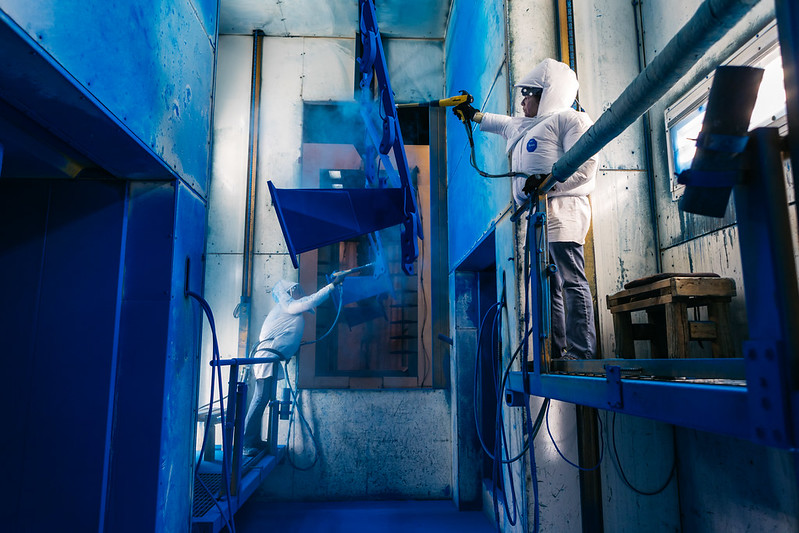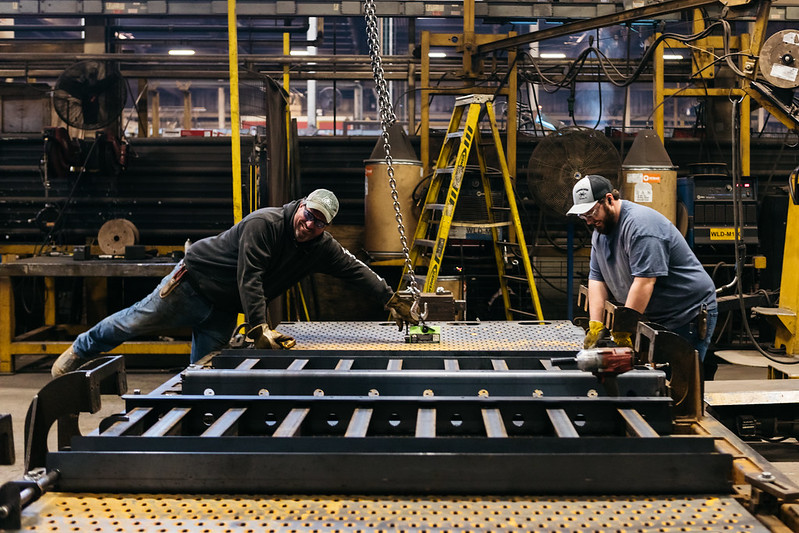Digital connectivity is the lynchpin of agriculture’s future. Without ubiquitous connectivity, the agriculture industry cannot fully embrace the new tools and technologies that will enable it to meet the productivity and sustainability demands of the future.
“We’ve done a number of studies and spent a lot of time with farmers to gather insights on the sustainable practices they are using,” said Nate Birt, senior advisor for Trust In Food, Farm Journal’s sustainable agriculture division. “Unless farmers are able to capture data to quantify the things they are doing, it will be very difficult for them to qualify for new programs and markets in the more digitized economy that is developing.”
Capturing and sharing data requires connectivity, both on the farm and in the field. That requires more than just a myopic approach to closing the connectivity gap.
“The GPS satellite part of connectivity is pretty good, so farmers are generally able to get the positioning information they need,” said Andy Theisen, product development manager at Kondex Corporation. “But farmers also need constant machine connectivity, yield map data, and other real-time data from things like weather and soil sensors. For a good portion of the country, the capabilities aren’t very good right now.”
AEM is determined to take an active role in shaping the future of agriculture for the betterment of all. With that in mind, the association is pleased to offer The Future of Food Production, a whitepaper detailing the key drivers poised to drive ag's evolution in the years to come. Learn more.
As presented in AEM’s whitepaper, just 25% of U.S. farms currently use connected equipment or devices to access data. Lack of adequate broadband coverage has been a big reason why. But that gap is already beginning to narrow. Tens of billions of dollars of state and federal funding have poured into rural broadband infrastructure, largely the installation of fiber optic cable. In many areas around the country, even the smallest of farms in the smallest of communities now have access to high-speed internet.
In late July of 2022, the USDA announced several new projects as part of its ReConnect Program, which furnishes loans and grants for the construction, improvement, or acquisition of facilities and equipment needed to provide broadband service in eligible rural areas. One project is in a rural area of Nevada, where a $27 million grant will help deploy a fiber-to-the-premises network for 4,884 people and 22 farms. Through another project in Arkansas, a $12 million grant will help establish a network connecting 966 people and 145 farms.
Theisen grew up on a farm in Wisconsin and shared a personal anecdote.
“Our family farm is on a state highway just outside of the village,” Theisen related. “The entire village (population roughly 1,800) has been hooked up with cable and high-speed internet for a while now, and the main line runs right down the highway. Years ago, when that line was first installed, farms and homes weren’t connected if they didn’t sign up. It was very costly to get connected later. Now with all of the fiber activity that’s going on, our family farm can get hooked up for free again.”
“Unless farmers are able to capture data to quantify the things they are doing, it will be very difficult for them to qualify for new programs and markets in the more digitized economy that is developing.” -- Trust in Food's Nate Birt
There are many facets related to connectivity.
While fiber optic is an important aspect of closing the connectivity gap, it is not a silver bullet. “Being connected” in a rural agricultural environment means several things. Equipment and sensors out in a remote field need their own connectivity solution. Expansion of existing systems including 5G towers and LEOs (low earth orbit satellites) can play a role in closing that gap. In the longer term, however, new solutions could come to the forefront.
“LEO satellites like Starlink are a good step in the right direction, but travel at a lower angle that isn’t ideal for a lot of areas,” Theisen said. “You might need some kind of receivers on the ground that are elevated to a certain point. Buildings and terrain can also create some limitations. But it’s always a good start when someone takes the bull by the horns and puts a system out there. You can critique it all you want, but at least something is out there so innovators can start finding ways to make it even better.”
Agricultural connectivity also encompasses more than the technologies and infrastructure that enable digital connections. As Birt pointed out, being connected is about having the right equipment and technology tools that can capture and share data, along with a stable of experts who can help farmers troubleshoot, analyze, and make it all work. Most of all, agricultural connectivity requires an open mind and willingness to embrace change.
According to Birt, Trust In Food’s research shows that farmers who are already finding success with data have a passion for it and are willing to endure some trial and error.
“I would describe this group as the early adopters,” Birt said. “On the other hand, there is a large segment of farmers who won’t necessarily be the first in line to get a new smartphone that just came out. They are curious, passionate, and see the opportunities, but don’t have time to deal with the hassle of chasing data that is frequently stored in multiple places. So, integrating data is another challenge the industry must overcome in coming years.
“Carbon markets are a great example,” Birt continued. “According to our research, 90% of farmers are simply waiting to see if something like this is right for them, or they are waiting for improvements such as a reduction in the amount of paperwork required or the streamlining of data capture. One of our core pursuits at Trust In Food is raising visibility of these connectivity gaps that exist. We’re also identifying ways to create programming and resources to help farmers begin closing their own data gaps by making it easier and more cost-effective.”
Theisen agrees that connectivity gaps currently exist on many levels. Over the next 10 years, gaps will begin closing one by one, creating additional momentum each step along the way.
“When it comes to farmers’ adoption of some of these new technologies, there are a lot of factors that play into it,” Theisen said. “I hate to say it, but one simply has to do with age. The age of the average farmer is pretty high. When I’m in the field with dealers and farmers, it’s clear that the younger generation wants to utilize a lot of this technology. It’s also clear to see what the major equipment manufacturers are doing. A lot of the more recent equipment changes haven’t been on the hardware side. The investment and changes have been on the software side of things with sensors and the ability for more automation. From that standpoint, we’re already heading down a path where connectivity is going to be required.
“So, I think a lot of big changes will happen all around the same time,” Theisen continued. “A lot of infrastructure gaps will continue to close on their own over the next several years. The age of farm equipment operators will continue getting younger. Then you will see a fairly rapid adoption of this technology over the next 10 years.”
“When it comes to farmers’ adoption of some of (the) new technologies (available today), there are a lot of factors that play into it.” -- Kondex Corporation's Andy Theisen
Obstacles create opportunities.
According to Thiesen, it’s important to understand that “over the next 10 years” might not sound like a lot of time. But with as fast as technology changes, significant advancements can take place over that timeframe.
In the nearer term, one possibility Theisen has heard about relates to television frequencies. Since television use in rural areas is significantly less than densely populated urban areas, some of that television frequency range could be utilized for data sharing among connected devices. “There would be some limitations there, too, and it probably isn’t an ideal long-term solution,” Theisen conceded. “But in the interim, it could be a helpful tool in more remote areas until other technologies are developed.”
Regardless of which connectivity solutions are developed and utilized, funding will continue to be a critical piece of closing the gap.
“The willingness to invest in broadband infrastructure is definitely strong right now, but the key is making sure those resources are being invested in the right areas,” Theisen said. “To do that, we have to prioritize what those ‘right areas’ even are. Organizations like AEM can play a big role in helping get that message out there.”
Another piece to consider is how connectivity-enabled data can actually help farmers. As Birt pointed out, historical data in and of itself is not always the most useful.
“What is important is being able to take all of that historical data into perspective in order to project future trends,” Birt said.
How can the farmer use data to make decisions on purchasing, planting or applications? There are many facets of a farming operation, creating a tremendous opportunity for farmers to use data to better manage their operations. To capitalize on that opportunity, it’s important for agriculture industry stakeholders to think holistically about the connectivity needs of the countryside. Connectivity is needed at farmers’ homes and offices, as well as in the field to upload data from equipment and sensors to the cloud.
“Connectivity is also about connecting that real-time data with advisors who can make recommendations to farmers,” Birt said. “It’s a complicated opportunity, but an opportunity nonetheless to make sure farmers have the access, bandwidth, and knowledge needed to continue doing their jobs.”
Want to learn more?
America’s farmers have cemented their legacy as the most essential of essential workers. Their willingness to assume enormous levels of risk and work tirelessly to help secure a critical supply chain is unparalleled. Plus, they do it all while managing millions of acres of land and preserving vital natural resources.
AEM Vision Team and Futures Council members spent countless hours discussing how the agriculture industry could be reshaped over the next 10 years. For more information on The Future of Food Production and other trends impacting the equipment manufacturing industry and the customers it serves, visit aem.org/insights.
Subscribe to the AEM Industry Advisor for more AEM member perspectives.





